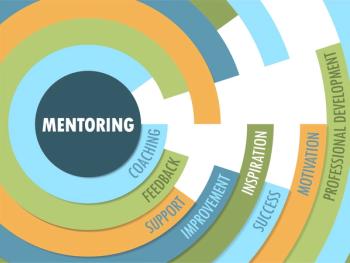- "Sharing these courageous stories is contagious. It inspires listeners to come forward with their own stories, and little by little we make the culture safer for those with mental illness and for any number of other stigmatized differences.”
-Anne Hallward, MD
Radio as a Public Health Intervention
A Q&A with a board-certified psychiatrist, whose radio show has become a vehicle for hundreds of hidden experiences to be brought into the light and transformed into inspiring narratives.
Q&A
[[{"type":"media","view_mode":"media_crop","fid":"38454","attributes":{"alt":"Anne Hallward, MD","class":"media-image media-image-right","id":"media_crop_8394527391519","media_crop_h":"0","media_crop_image_style":"-1","media_crop_instance":"3817","media_crop_rotate":"0","media_crop_scale_h":"0","media_crop_scale_w":"0","media_crop_w":"0","media_crop_x":"0","media_crop_y":"0","style":"float: right;","title":"Anne Hallward, MD","typeof":"foaf:Image"}}]]When Anne Hallward, MD began her private practice in 2002, it became clear that one single emotion resonated in almost every patient story she heard: shame. Shame was at the heart of depression, addiction, suicide, loneliness, trauma, and much more. After 11 years of training, Dr Hallward was determined to make an impact. Yet she wanted to reach more than just the patients who walked through her door.
Her idea was to establish a public health intervention to reduce shame and stigma by creating a forum where people could hear stories from others who gave voice to the feelings and experiences we all hide. Dr Hallward explains, “Sharing these courageous stories is contagious. It inspires listeners to come forward with their stories, and little by little we make the culture safer for those with mental illness and for any number of other stigmatized differences.”
It wasn’t long before Dr Hallward realized radio was the perfect medium for her idea. She says, “When patients started to cover their faces, put their heads down, or avoid eye contact, it told me that we were right where we needed to be. Right at the place of shame. And so I knew a public health intervention should minimize visual exposure.”
Shame: a lethal public health threat
Amy Amoroso (AA): In your
Anne Hallward (AH): Let’s start with the definition of shame and make a distinction between shame and guilt. Guilt is a very particular feeling of, “This thing that I did was bad.” It is a very specific feeling about an action or inaction that was bad. Shame involves a much more global sense of the self as bad and unloveable. It makes us want to hide.
Suicide is about feeling hopeless about things ever changing and part of that is feeling like, “I can’t reach out for help. I can’t reveal who I really am. No one would get it or love me if they knew this thing about me.” This is shame. So, I see shame as a lethal public health threat. Suicide is one of the
Sharing stories improves health
AA: Is there any research that supports the fact that telling and listening to stories is good for our health?
AH:
Thomas Houston and researchers4 at the University of Massachusetts looked at listening to stories as a health intervention. They did a study in which low-income inner city African Americans with uncontrolled hypertension watched videos of people from their own neighborhood telling stories about what it was like to live with hypertension. Three months later, this group continued to have an 11-point lower systolic blood pressure without any change in medication, compared with the control group who watched instructional health improvement videos.
- "I had to remind myself that I had lived through it already. I had known the pain, and survived it. It only remained for me to give it voice, to share it for use, that the pain not be wasted.”
-Audre Lorde
Stigma and isolation
AA: How can psychiatrists use your show when working with patients?
AH: What I hope is that psychiatrists will personally recommend the show to their patients. They can link to
Shedding light on hidden differences and feelings also helps to reduce stigma. One way that stigma affects families with mental illness is through what I call the “casserole effect.” If you have a child or parent in the hospital, your neighbors make you food; they bring you flowers in the hospital. But if you have a family member in the hospital for mental illness, the patient never gets any flowers and the family never gets casseroles. There’s an implicit gag rule of silence, where communities pretend this isn’t happening to protect the family from the stigma. So patients and families can listen to the
- "If you invite someone into a safe space, they will tell the most compelling story. They will dare to speak the thing that they’ve made so quiet inside, and this is actually the place where we connect with each other. The most personal is the most universal.”
-Anne Hallward, MD
Sometimes when a feeling is hard to identify and someone finally names it, the feeling begins to be more finite. For example, we did a series on caregivers for loved ones with dementia. I interviewed
AA: Describe an interview that really touched you or where you learned something important that you hadn’t understood before.
AH: I spent a day recording
I was moved because what the hospice director gave them was the chance to give to someone else. I could see the value it offered these men, who had essentially been discarded by society, to feel that they were giving something of value. This experience reminded me that everyone wants and needs to feel that they are making a contribution, no matter how dire their own circumstances are. This is true for every one of my guests on radio. Each individual is offering his or her own personal struggle as a gift to others by telling it in public. It is a way of redeeming the wound and, as Audre Lorde says, to share it with others “for use.”
The ripple effect
AA: Can you describe the impact that your program is having on your listeners?
AH: The Safe Space Radio podcast is now part of the curriculum in psychology and sociology courses. It is used in training for teachers, psychiatry residents, social workers, and hospice volunteers, and it is also affecting many individuals and their families. For example, I went to pick my son up from a play date with a new friend. When I got to the door, both parents came to meet me and they clearly knew who I was, which surprised me. They said, “We want to thank you so much for the radio show you did about a camp for transgender kids. Our daughter was born a boy and she heard your show and she wanted to go to that camp. It was the first time she was able to be herself in public and to feel safe and be with other kids like her. It was a turning point in her life and we thank you so much.” There I stood at the door, trying to pick up my child to go home, and the impact was truly touching. That show aired years ago and I hadn’t known about the effect of it.
When I began the show, I was really hopeful and I remain convinced that if you invite someone into a safe space, they will tell the most compelling story. They will dare to speak the thing that they have made so quiet inside and this is actually the place where we connect with each other. The most personal is the most universal. No matter what the particulars are-parenting a transgendered child, caring for someone with dementia, or having a felony record and trying to reform. We all identify with feelings of vulnerability when spoken from the heart.
Disclosures:
Ms Amoroso is a freelance writer in Portland, Maine. Dr Hallward is a Board certified psychiatrist in Portland, Maine and founder of
References:
1. The Centers for Disease Control and Prevention. Deaths and mortality [Leading Causes of Death in the US. 2013.]
2. Pennebaker JW, Sussman JR. Disclosure of traumas and psychosomatic processes. Soc Sci Med. 1988;26:327-332.
3. Pennebaker JW, Kiecolt-Glaser JK, Glaser R. Disclosure of traumas and immune function: health implications for psychotherapy. J Consult Clin Psychol. 1988;56:239-245.
4. Houston TK, Allison JJ, Sussman M, et al. Culturally appropriate storytelling to improve blood pressure: a randomized trial. Ann Intern Med. 2011;154:77-84.
Newsletter
Receive trusted psychiatric news, expert analysis, and clinical insights — subscribe today to support your practice and your patients.


















